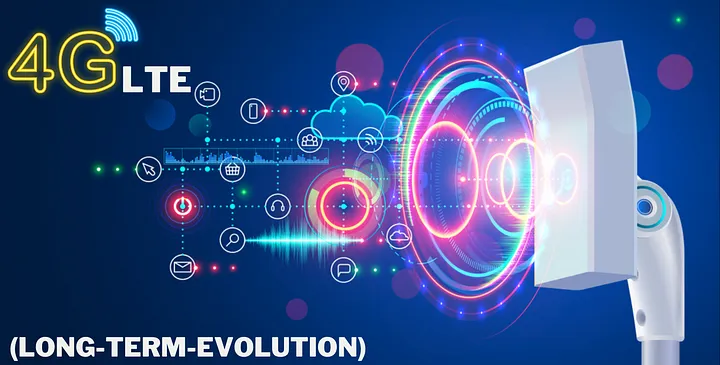Welcome to a series of articles dedicated to exploring the critical topic of Disaster Recovery in Government Agencies. In an era marked by increasing natural disasters, cyber threats, and unforeseen disruptions, it has become imperative for government organizations to prioritize the implementation of robust and efficient disaster recovery strategies. This collection of articles aims to provide a comprehensive understanding of the role of Local LTE (Long-Term Evolution) networks in disaster recovery, ranging from basic concepts to specialized technical insights.
- What is Disaster Recovery in Government Agencies?
Disaster Recovery in Government Agencies refers to the systematic and strategic measures taken by government entities to minimize the impact of disasters, ensure continuity of operations, and swiftly recover from adverse events. It involves the implementation of comprehensive plans, policies, and technologies to mitigate risks, protect critical infrastructure, and facilitate effective response and recovery efforts.
- How does Disaster Recovery apply to Local LTE?
Local LTE networks play a pivotal role in enabling efficient disaster recovery operations for government agencies. These networks provide a resilient, secure, and private communication infrastructure, ensuring uninterrupted connectivity during crises. By utilizing dedicated LTE infrastructure, government entities can establish reliable communication channels, coordinate emergency responses, and maintain essential services even when traditional networks may be compromised or overloaded.
- What are the Local LTE roles for Disaster Recovery in Government Agencies?
Local LTE networks serve multiple roles in disaster recovery scenarios. They enable seamless communication between first responders, emergency personnel, and government agencies, facilitating swift coordination and decision-making. These networks support data transmission, voice communications, video streaming, and real-time situational awareness, enhancing overall operational effectiveness during crises.
- What are the use cases for Local LTE in Disaster Recovery?
Local LTE networks find extensive application in disaster recovery across various scenarios. They enable communication and data exchange in remote or underserved areas, augmenting the capabilities of existing infrastructure. In addition, these networks can be rapidly deployed in temporary command centers, disaster recovery sites, or mobile emergency vehicles, ensuring continuous connectivity and enhancing overall response efficiency.
- What is the mechanism and importance of Local LTE networks in Disaster Recovery?
Local LTE networks utilize a combination of specialized hardware, software, and wireless technology to establish dedicated communication channels. These networks typically operate on licensed frequencies, providing secure and reliable connectivity. By ensuring uninterrupted communication and data exchange, Local LTE networks enhance the effectiveness of disaster recovery operations, minimizing response time, and saving lives.
- How can Local LTE networks enhance emergency response coordination?
Local LTE networks provide dedicated communication channels that enable seamless coordination among multiple agencies involved in emergency response efforts. These networks facilitate real-time sharing of critical information, such as incident updates, resource allocation, and situational awareness, fostering effective collaboration and decision-making among response teams.
- What role does Local LTE play in supporting public safety communications during disasters?
During disasters, public safety agencies rely heavily on reliable and resilient communication networks to carry out their duties. Local LTE networks ensure uninterrupted connectivity for first responders, allowing them to exchange vital information, access real-time data, and coordinate rescue and relief operations in a secure and efficient manner.
- How can Local LTE networks improve communication in remote or underserved areas?
In remote or underserved areas where traditional communication infrastructure may be limited, Local LTE networks can bridge the connectivity gap. By deploying LTE base stations and leveraging satellite or wireless backhaul solutions, government agencies can establish reliable communication networks in previously inaccessible regions, enabling effective disaster response and recovery efforts.
- What advantages do Local LTE networks offer in terms of network resilience and reliability?
Local LTE networks are designed with redundancy and resilience in mind, ensuring continuous operation even in challenging conditions. These networks can incorporate backup power sources, redundant equipment, and failover mechanisms, thereby minimizing the risk of service disruptions and ensuring reliable communication capabilities during disasters.
- How does Local LTE contribute to data transmission and sharing in disaster recovery?
Data plays a crucial role in disaster recovery operations. Local LTE networks provide high-speed data transmission capabilities, allowing government agencies to share large volumes of critical data, such as maps, videos, sensor readings, and real-time analytics. This facilitates informed decision-making, resource allocation, and situational awareness for effective disaster response.
- Can Local LTE networks be deployed in mobile command centers or temporary emergency facilities?
Absolutely. Local LTE networks can be quickly deployed in mobile command centers, temporary emergency facilities, or on-the-move vehicles. These networks provide on-site connectivity for emergency response personnel, allowing them to access critical applications, communicate with headquarters, and share real-time data from the field, enabling rapid and coordinated decision-making.
In conclusion, this series of articles has provided a comprehensive introduction to the role of Local LTE networks in Disaster Recovery for Government Agencies. By exploring fundamental concepts and addressing key questions, we have highlighted the importance of resilient communication infrastructure in mitigating the impact of disasters and ensuring effective response and recovery efforts. Local LTE networks offer a range of benefits, including enhanced emergency response coordination, support for public safety communications, improved connectivity in remote areas, network resilience, efficient data transmission, and the ability to deploy in temporary facilities. As government organizations consider the establishment of their private LTE networks, it is crucial to build a baseline understanding across various relevant fields. Stay tuned for upcoming articles in this series, where we will delve into more specialized and technical aspects of Disaster Recovery in Government Agencies through Local LTE networks.




